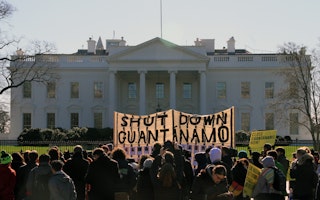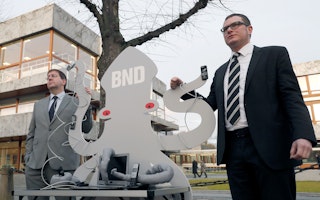Risks of Loosening Arms Export Controls Far Outweigh Benefits
By William D. Hartung
An Obama administration plan to loosen U.S. arms export controls could make it easier for weapons to find their way into the wrong hands—a risk that far outweighs the measure’s paltry economic benefits.
In August 2009, the administration launched the Export Control Reform Initiative (ECRI), designed to streamline U.S. arms export controls, enhance national security, and grow the economy.
The administration said it wanted to eliminate or reduce controls on items of limited national security concern while increasing controls on more dangerous exports. The policy is being implemented in stages and the first round of changes will take effect in October.
But the administration’s proposed reforms are unlikely to accomplish either goal, according to a report issued by the Center for International Policy, with support from the Open Society Foundations.
The loosening of arms export controls is being justified on the grounds that selling U.S.-made weapons and parts to America’s potential military adversaries does not pose a significant security threat as long as the exports are nearly obsolete or readily available.
This narrow focus on controlling the flow of modern equipment ignores the danger of giving countries of concern access to less sophisticated weapons and components. Iran, for example, wants spare parts to keep its aged American-made fighter jets and attack helicopters flying. China wants older technology that it can copy and manufacture. Other regimes want the means of daily repression, like low-tech guns and communications and surveillance equipment.
Under the envisioned Obama reforms, none of these items would be kept behind the fence of U.S. export controls.
A central element of the administration’s new policy has been to move thousands of items from the United States Munitions List (USML)—a compendium of arms and arms-related technologies monitored by the State Department—to the Commerce Control List (CCL), which subjects equipment destined for export to less rigorous scrutiny.
In fact, the White House has asserted that it eventually intends to permit a significant percentage of the items that are now being transferred off of the USML to be exported without a license. This means that oversight would be lifted from these items.
To promote the reform package, the administration is touting its economic benefits. A former assistant secretary of state for political-military affairs, Andrew Shapiro, has argued that the administration’s export control reform would “have a real impact on our economy at a time when competition is even more fierce and at a time when our manufacturing base could really use a boost.”
But neither the administration nor the arms and aerospace industries, the major supporters of the export reform effort, have provided credible evidence that loosening controls will have substantial economic benefits.
In fact, there is strong evidence to suggest that export reform is unlikely to significantly increase U.S. sales of military technology. The United States already accounts for nearly 80 percent of the global arms market. Even a radical reform of arms export controls is unlikely to push that figure much higher. As one business analyst has noted, the economic benefits of arms export reform, if they exist at all, are likely to be “infinitesimal.”
It is even possible that loosening restrictions on arms exports could reduce U.S. employment. Thomas Buffenbarger, president of the International Association of Machinists, the union which represents the bulk of the workers in the arms and aerospace industries, has warned that “the less stringent controls provided under the CCL could lead to further transfers of technology or production from the U.S. to another country,” with potentially devastating consequences for U.S.-based production and employment.
A number of steps should be taken to ensure that the administration’s export control reform initiative does not undermine critical policy goals.
First, there should be a moratorium on moving additional items from the USML to the CCL until strict safeguards have been developed to prevent the transfer or retransfer of U.S. arms and arms technology to terrorists, human rights abusers, or countries seeking to develop nuclear weapons.
Second, Congress and the administration should review the Export Control Reform Initiative’s impact on stopping arms transfers to dictatorships and human rights abusers. They should strengthen those restrictions to ensure that items moved from the USML to the CCL receive the same level of human rights screening they currently undergo. These changes should be embedded in law, not just left to the discretion of a given administration.
Finally, the Department of Commerce should undertake a detailed analysis of the employment impacts that may result from transferring items from the USML to the CCL or from decontrolling them altogether. These economic effects should then be used to help determine whether to ease controls on a given item.
William D. Hartung is director of the Common Defense Campaign: Arms & Security Project at the Center for International Policy.


